Canning Tomatoes: Pressure Canning or Water Bath.
This page may contain affiliate links. More Information.
Canning tomatoes comes with a lot of questions: For starters, do tomatoes need to be pressure canned? Can you process tomatoes in a water bath canner instead of a pressure canner?
The good news is… Pressure Canning and Water Bath Canning are both suitable for Tomatoes.
This post includes directions for both water bath canning and pressure canning tomatoes.
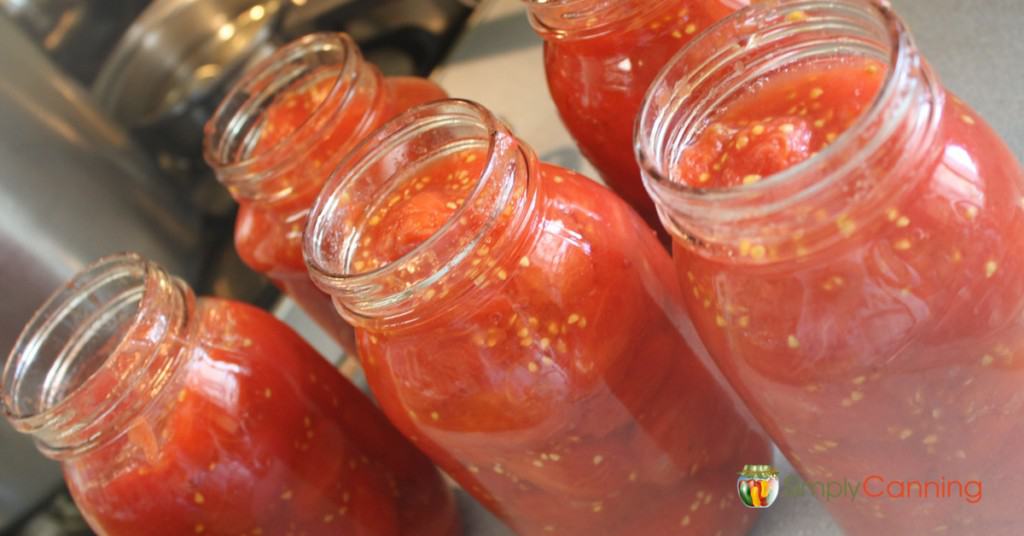
Know your Canner
Before you start this project, please be familiar with using your canner. This recipe includes directions for both water bath and pressure canning.
- Choose what canning method you will follow.
- Read through the canner specifics at one of the links below.
- Then come back here and get tomato specific directions.
These posts will familiarize you with how a canner works and what steps to take to get set up for any canning project.
Pressure Canning / How to use a pressure canner.
Water Bath Canning / How to use a water bath canner.
What is Raw Pack
The recipe below is for a raw pack. This simply means you’ll pack the tomatoes in the jars raw. It does NOT mean you don’t have to process. You do have to process your tomates.
The tomatoes go in the jars raw. And then you will process the jars in either a water bath canner OR a pressure canner.
If you want to use a hot packing method check out canning tomato sauce. Because if you cook them first they’ll get saucy.
Canning Tomatoes: Expert Tips and Step by Step Directions
Gather Canning Supplies for Canning Tomatoes:
- pressure canner
- canning jars
- canning lids and rings
- jar lifter and canning funnel
- large pot of water or blancher
- bowls
- large spoons
- sharp knife
- towels and dish cloths
Ingredients:
- tomatoes – I’m using Roma tomatoes on this page, but other varieties work as well.
- canning salt (optional)
- lemon juice (or citric acid)
Start by preparing your jars and getting water in your canner heating. See the canner specific directions linked above.
How to Blanch and Peel Tomatoes for Canning
Blanching simply means you’ll dip the tomatoes in boiling water for 30-60 seconds and then cool them quickly. The skins will slip off easily in your hands.
In these pictures, I am working with Roma tomatoes. I like them for canning because they are meatier than other tomatoes. They are smaller and I can fit more in the blancher at one time. But you might want to only blanch 4-6 tomatoes at a time. It all depends on the size of the tomato.
Start with your water at a rapid boil. When you add your tomatoes the water will likely stop boiling. You want it to come back to a boil fairly quickly. Within a minute or so is good. If it doesn’t then just put in less tomatoes next time. It’s ok… it might just take longer for the tomatoes to split.
Leave the tomatoes in the water for approximately 30-60 seconds. Start counting right away you don’t have to wait for the water to come back to a boil. Watch the tomato…. you will likely see the skins split.
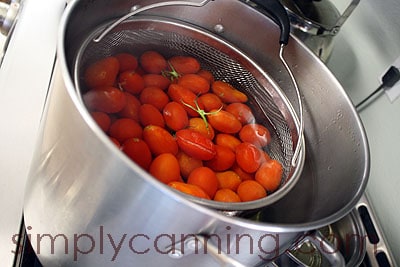
When you see them splitting they are done. This could happen quickly (even before the water comes to a boil) or it might take 60 seconds or so. This will depend on the temperature of the water, and the ripeness of the tomatoes. The riper they are the quicker the process works.
Occasionally you won’t see the skins split. But you don’t want to leave them so long the whole tomato gets cooked through. The goal is to just cook the outside skins so they loosen. If you don’t see them split go ahead and remove them at 60 seconds and check. Pull them out, allow them to cool so you can handle them (putting them into ice cold water helps) then just tug at the skin a bit. It should slip right off very easily.
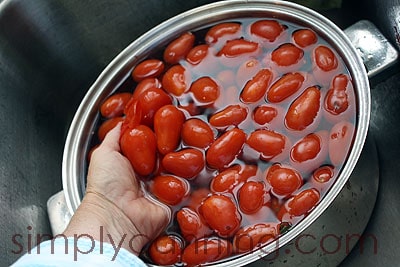
Less ripe tomatoes will generally take a little longer than ripe tomatoes. And if you’ve got tomatoes that are mostly ripe but have green areas on them the green areas might need a little encouragement with a knife. It’s all good.
Starting with nice ripe tomatoes is ideal and makes this step easiest.
Blanching Basket Options
- This is my preferred basket. It is a Polder Brand Basket.
- You can also use an inexpensive blancher like this one.
- But you can also just keep it simple and use a slotted spoon and pot of boiling water.
A Blanching Question
I was asked this question and it is a good one. “After putting the tomatoes in boiling water so the skins split, then into ice cold water to stop them from cooking, won’t the tomatoes be cold when I put them in the hot jars? Can this cause my jars to break?”
Yes. The jars do cool down when you add the tomatoes. They won’t be cold though. They might be sort of lukewarm or even end up at room temperature. That is why you want the water in your canner hot, but not boiling hot. It can be a bit hotter than your jars; canning jars are pretty sturdy but don’t have a drastic difference in temperature. Great question.
Raw Packing Tomatoes
After you slip the skins off, quarter tomatoes with a paring knife. I do this one by one and put them right in the jars (I add lemon juice to the jars first, see the next section for details.)
So, these are the steps.
- Blanch and Cool Tomatoes
- Pull each tomato out of the cooling water, remove the skins, cut if needed and put right into prepared jars.
I say cut into quarters but again it depends on the size of your tomatoes. The Roma tomatoes you see in the pictures above, I just put them in the jars peeled and whole, if you’ve got large tomatoes you’ll want to cut them up.
Add Lemon Juice and Salt to the Canning Jars.
You’ll need to add lemon juice (or some sort of acidification) and salt to each jar of tomatoes. You can do this before or after you add the tomatoes.
It is easier if you do it before. If you forget and have a jar with tomatoes already, no big deal just remove a spoonful of tomatoes if needed so the lemon juice won’t mess with the 1/2 inch headspace required. (I’ll talk about headspace below too!)
I know I’ll get this question so …. Yes, you should add acidification. This bumps the ph levels and makes them high acid enough for home canning. It doesn’t matter if you use a water bath or pressure canner.
These recipes and processing times were tested for tomatoes with added acidity. Don’t skip this.
Add bottled lemon juice to the jars: Use 2 Tablespoons lemon juice per quart or 1 Tablespoon lemon juice per pint.
Note: There are other ways of adding acid to your tomatoes. Sometimes people say they don’t like the flavor of the lemon juice. I’ve never noticed a taste at all. Lemon juice is my choice but you might want to look at this page – How to Can Tomatoes Safely /. The Lemon Juice Debate for some other options.
Add Salt to your jars when you add the lemon juice. The good news is, salt is actually optional. I highly recommend it as it does add nice flavor, but if you need low sodium you can reduce or eliminate salt.
If desired, also add 1 teaspoon of salt per quart jar or 1/2 tsp. salt per pint to the jars, if desired.
Back to Packing the Tomatoes
As you skin the tomatoes, slice them in halves or quarters, whatever you you prefer. (I will sometimes even leave my Roma tomatoes whole.) Place them directly into your jars.
Your jars should be warm when you are working with your tomatoes. I’ll usually just have them in my canner warming up. You can also run a dishwasher rinse cycle with the jars and then leave them in the steamy dishwasher until you are ready to fill each one. Learn why sterilizing jars isn’t required.
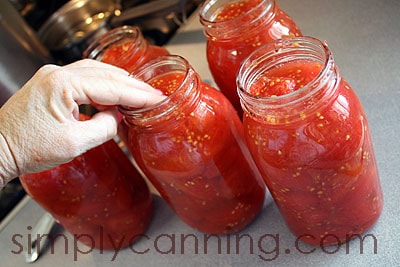
Press down on the tomatoes in the jar until spaces between them fill with juice. This will crush them slightly. Leave 1/2-inch headspace.
Repeat steps until all tomatoes are skinned and chopped. You may need to let your water come back to heat in between batches in the blancher.
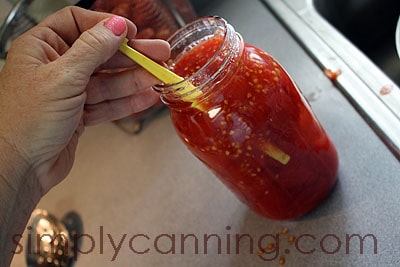
Remove air bubbles with a small utensil–I find an orange peeler works great for this step. But they do sell bubble tools for the job as well.
Be sure and wipe the rims of your jars clean before placing your lids on. If there are bits of food, it may interfere with the seal. Place lids and screw bands on the jars and place in the canner on a rack. Process according to Water Bath or Pressure Canning Instructions.
Remember how your jars were hot when you filled them? They will most likely cool when you add the tomatoes, thus you should have the water in your canner warm/hot, but not boiling. You don’t want a drastic change in temperature. Canning jars are pretty sturdy, so they will handle some temperature change…but I’d still not risk placing cool or even room temperature jars in boiling water.
So in short, have the canner water hot, but not boiling hot, when you fill it with the jars.
Don’t Add Water to the Jars
Keep in mind these are raw packed tomatoes in their own juice. You should not add water to your jars. If you add water, you change the acidity and there are different processing instructions in those circumstances.
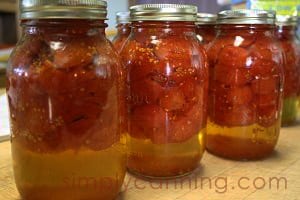
Also, keep in mind that these tomatoes may float (like in the picture above). It is just a fact of this method of canning. Tomatoes will end up at the top of the jars after processing with more liquid at the bottom.
I’ve got some tips on how to avoid floating when canning tomatoes here.
It is prettier to make a tomato sauce, but this style of raw packed whole tomatoes has its place in many of my recipes, so I always do a bunch like this. With the raw pack style, you can even pull out the tomatoes in the middle of winter to put on a salad. Definitely mushier than fresh, but they still hold together well enough.
Processing Directions for Canning Tomatoes
Processing for a Pressure Canner
Process both pints or quarts for 25 minutes.
Processing for a Water Bath Canner
Process both pints or quarts 85 minutes.
(Be sure to adjust processing according to your altitude, using charts below. For more information, see this altitude adjustments page.)
Canning Tomatoes Tips & FAQs
Yes. Please do add lemon juice or some sort of acidification to your home-canned tomatoes. It all has to do with the acidity. For more information on why acidifying your tomatoes is important, please read Canning Tomatoes Safely. Get the answers to do you really need lemon juice/citric acid? What’s the big deal, anyway?
I explain how to can tomatoes in this article, but another option is to freeze your tomatoes prior to canning them. When you thaw them out, the skins slip right off. Check out this page for more information. Information about freezing tomatoes can be found here.
This is probably normal. If the bubbles are small and not moving like they are fermenting then it is fine. If you have movement in the jar then it is possible you’ve got spoilage happening.
Yes, you are right. The jars do cool down when you add the tomatoes. They won’t be cold though. They might be sort of lukewarm or even end up at room temperature. That is why you want the water in your canner hot, but not boiling hot. It can be a bit hotter than your jars; canning jars are pretty sturdy but don’t have a drastic difference in temperature. Great question.
You really do need to process your jars of tomatoes but it doesn’t have to be a water bath. It can also be in a pressure canner. You should not do what is sometimes called “open kettle canning”. You can read more about open kettle canning here.
Oh goodness! Canned tomatoes and tomato sauce are basic in any pantry. It can be used as a base for soup or stews. You can make and can salsa but you can also open a jar of home-canned tomatoes add vinegar, peppers, onions, garlic, etc and make fresh salsa from it.
Just like regular-sized tomatoes. :). The trick is the peeling step. You can’t skip it. You’d be surprised how easily cherry tomatoes peel though. Be sure and watch close they don’t need to be blanched as long.
This will depend on what recipe you are using. Are you adding water? Are you canning whole or sauce? For this page we are packing tomatoes cut with no added water. Just in it’s own juice. Process both pints or quarts 85 minutes. (don’t forget the acidification!)
Other Tomato Posts and Recipes
Canning Tomatoes Index – many recipes here.
How to adapt your own homemade salsa recipe for canning purposes.
Tips for Home Canning Tomatoes
Dehydrating Tomatoes is another great option
Recipe Card
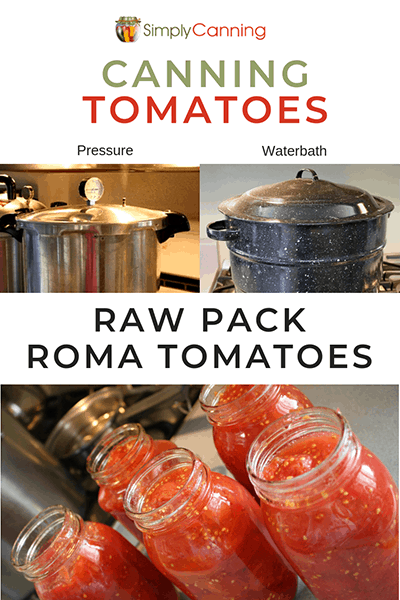
Source: The National Center for Home Food Preservation


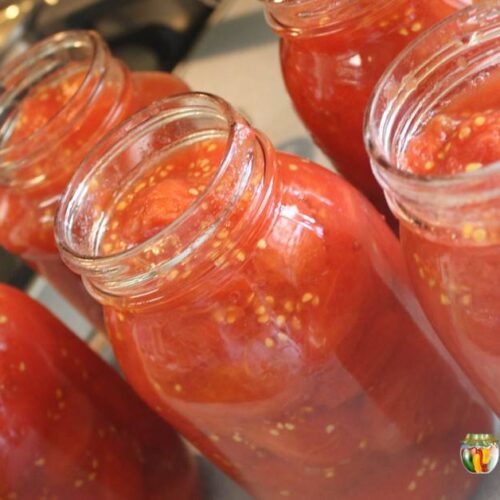
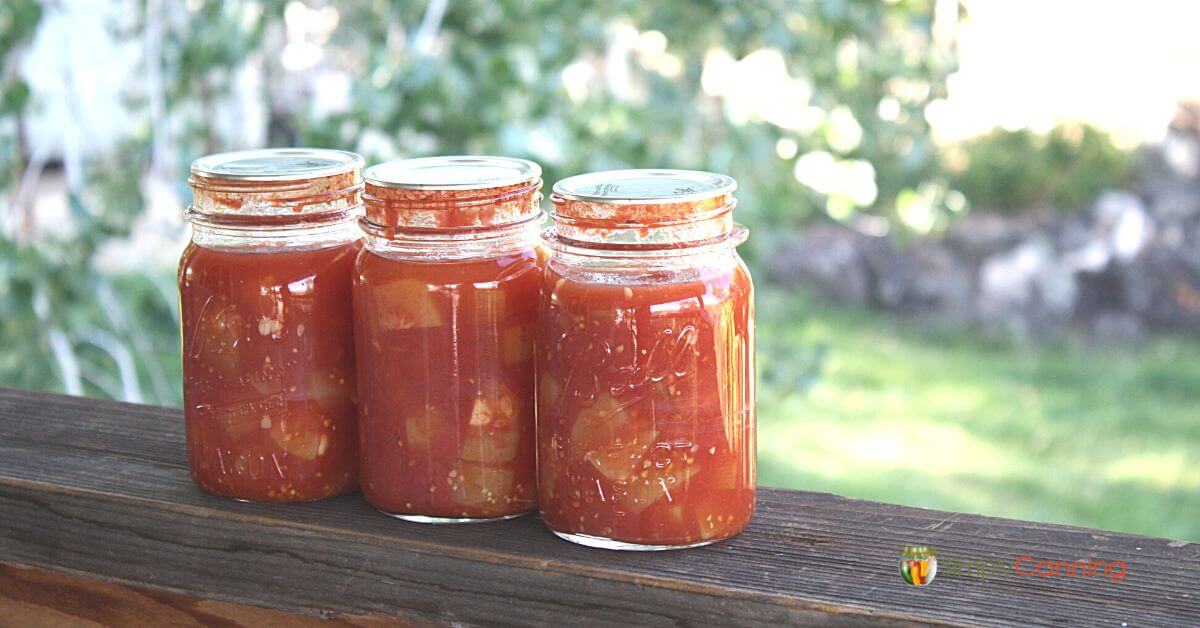
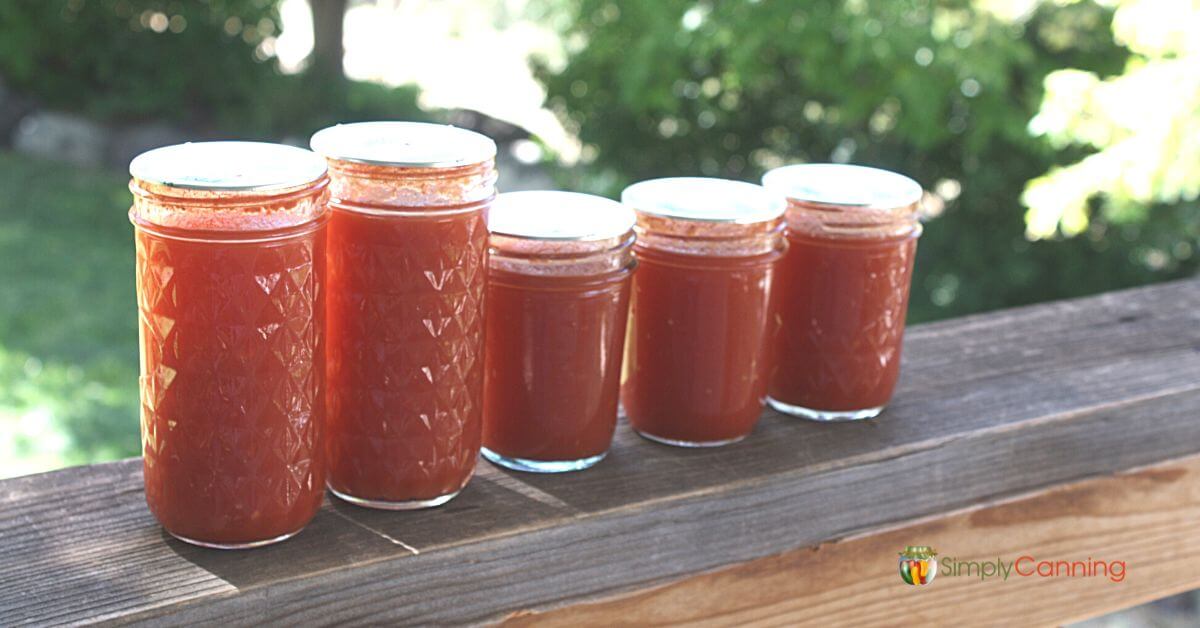
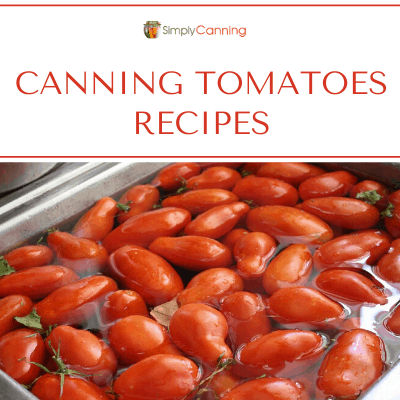
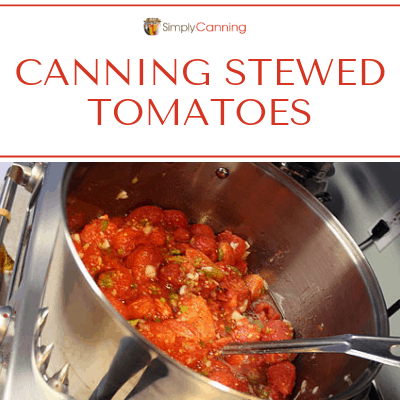
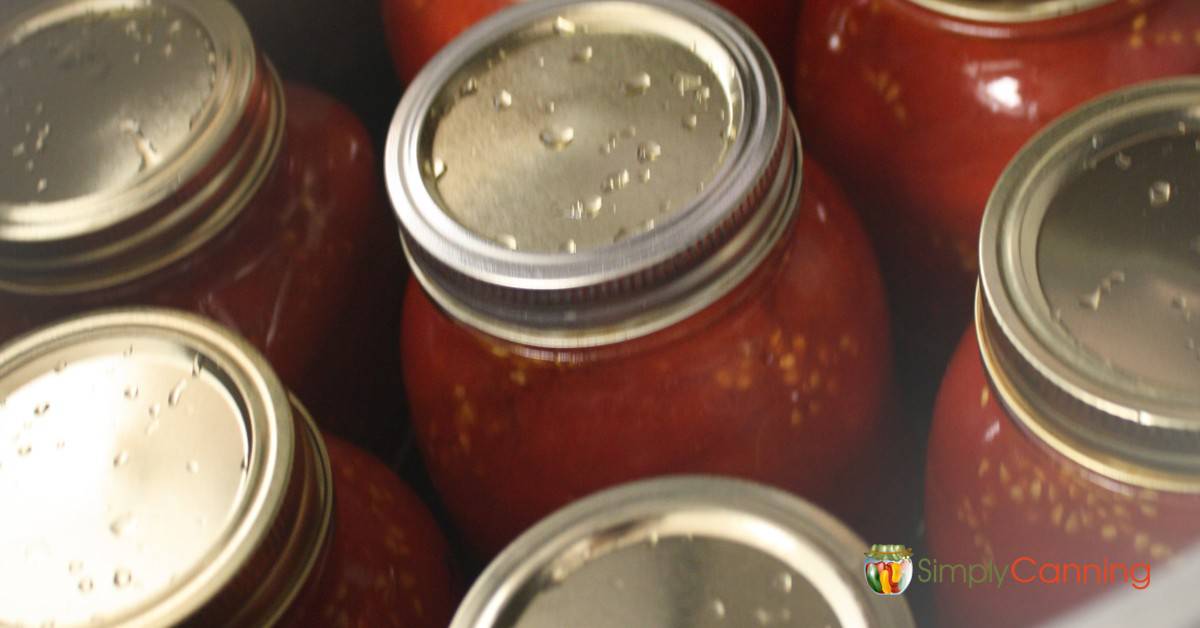
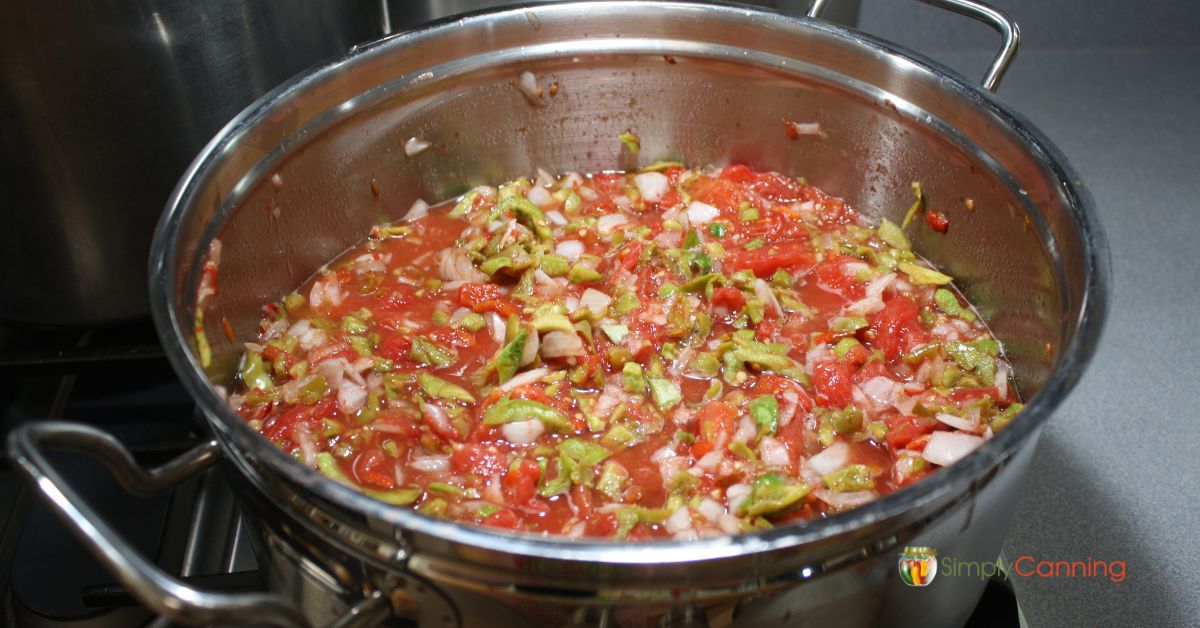
Is doing a raw pack of tomatoes similar to making diced tomatoes? Tomatoes don’t grow super well in my area but not impossible so I would have to likely buy them in bulk to make all of the tomato products I like to use-diced, sauce, paste, and crushed. I’m trying to make a list of foods I want to can and gathering recipes for them so I can get started-and then figure out where I am going to put it all lol and is 1 pint equivalent to a 15oz can from the store?
Yes, raw pack tomatoes would be similar to diced tomatoes. Except the texture will be a bit different. but I’ve substituted my raw pack tomatoes for diced in many recipes and had no problem. And one pint is 16 oz… so it’s close. Again I’ve used a pint to replace a can of something and it works fine. 1 oz difference is pretty small.
you don’t mention the amountof water needed in the canner. Do you put the jars in and then cover them with water or do you only fill to the metal ring?
Hi Donna, Since the basic instructions on how to use a canner are the same for all foods I’ve put that on a single page with the food specifics on the recipe pages. I do have a link to that on the page but maybe I need to make it more prominent. The answers to your questions about water levels depend on the type of processing you want to do. Here are the links for you. If you want to process this in the waterbath check this page for specifics. If you want to process in a pressure canner check… Read more »
First time ever canning tomatoes. I just started canning this year, after deciding I wanted to branch out my garden to food along with flowers.
I’m pretty excited. A lot easier than I thought it would be.
PS. LOVED THE SCRIPTURE at the end of this page.
I’ve been canning tomatoes for years without removing the skins. Why? Because that part, like all fruit is where the majority of the vitamin C is. Just remove the stem and any blems. Toss ’em into a food processor and blend. Fill hot cleaned jars and can as per usual; no need for added salt. Folks outta learn how food tastes without added SOS, i.e., added salt/oil/sugar. Add a touch of citric acid depending on the size of the jar. ‘Tis unlikely humans will survive as a civilization continuing to do things the same way we’ve always have. This is… Read more »
Hi John, The reason it is recommended that you remove the skins is… that is the way it was tested. The skins may have more bacterial load than just the flesh of the fruit. Washing them cleans them… but not as much as peeling them. this is a hot debate in the canning world!
Citric acid works, I always use lemon juice just because that is what I have on hand. 🙂 Just be sure you acidify your jars.
As for salt… no problem it is perfectly safe to leave it out.
I have canned tomatoes without removing the skins, with excellent results. This practise was not tested as the skins can be undesirable to consume,. With domestic kitchens able to use food processors to break the skins down into small pieces, it has become aesthetically feasible to include the skins when canning tomatoes. Tomato skins have good nutritional value. Personally, since items like cherries have been tested and can be canned safely with the skins on, it seems unlikely that tomatoes would be all that different. Since we can bushels and bushels of tomatoes, we are going to start using a… Read more »
Thanks for sharing. I checked out the document you included and found it interesting. It looks to me like someone who is asking for the research to be done on canning with tomato skins. I do hope they fund this and do the testing! It would be reassuring. I do still recommend taking the skins off.
What do I do with the water, in the raw method, when ready to use the tomatoes? Thanks for the video, I’ve got a ton of tomatoes this year!
Do you mean the liquid in the jars of tomatoes? It really just depends on how you’re using the end product. You could drain it off, reserving the liquid to add to soup or something like that. Or if you’re making sauce, you might just blend the tomatoes with the juice, etc. It just depends. 🙂
-Rachel (Sharon’s assistant)
Can I pour off some of the tomato juices before canning?
No with these directions. The juices from the tomatoes will fill up the jar. You don’t pour any off.